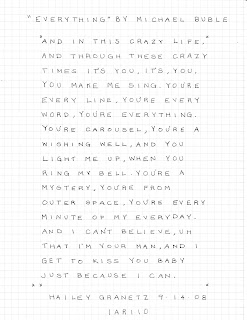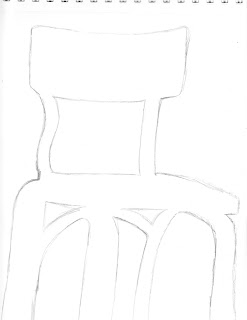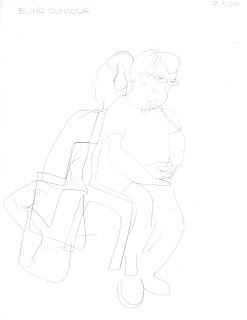For this project, we were told to create a "box for twelve twigs." Using twelve twigs of our choosing and exactly one binding agent, we had to create a box, container, entrapment, etc. to hold our twigs.
After gathering my twigs, I began to separate them into groups: thin, thick, straight, curved. Within my groupings I noticed that the twigs looked as if they were progressing or evolving from one group to the next. Playing off of that idea, I created my first model to look like it was continually rising and moving in a circular motion.
 I placed the bigger twigs towards the bottom of the model and the thinner ones at the top to juxtapose the obvious order in which to place the twigs.
I placed the bigger twigs towards the bottom of the model and the thinner ones at the top to juxtapose the obvious order in which to place the twigs.
 The main problem that I ran into with this model was the support system. The supports that I had created to hold up the structure were not as sturdy as I had originally intended.
The main problem that I ran into with this model was the support system. The supports that I had created to hold up the structure were not as sturdy as I had originally intended.
 After trying numerous other ways to support my model, I decided to move away from the radial structure. The new model I created still conveys that idea of the progression of a twig, yet the support system was definitely improved upon.
After trying numerous other ways to support my model, I decided to move away from the radial structure. The new model I created still conveys that idea of the progression of a twig, yet the support system was definitely improved upon.
 The way in which I folded the paper allowed the structure to actually support itself rather than relying on separate parts.
The way in which I folded the paper allowed the structure to actually support itself rather than relying on separate parts.

After gathering my twigs, I began to separate them into groups: thin, thick, straight, curved. Within my groupings I noticed that the twigs looked as if they were progressing or evolving from one group to the next. Playing off of that idea, I created my first model to look like it was continually rising and moving in a circular motion.
 I placed the bigger twigs towards the bottom of the model and the thinner ones at the top to juxtapose the obvious order in which to place the twigs.
I placed the bigger twigs towards the bottom of the model and the thinner ones at the top to juxtapose the obvious order in which to place the twigs. The main problem that I ran into with this model was the support system. The supports that I had created to hold up the structure were not as sturdy as I had originally intended.
The main problem that I ran into with this model was the support system. The supports that I had created to hold up the structure were not as sturdy as I had originally intended. After trying numerous other ways to support my model, I decided to move away from the radial structure. The new model I created still conveys that idea of the progression of a twig, yet the support system was definitely improved upon.
After trying numerous other ways to support my model, I decided to move away from the radial structure. The new model I created still conveys that idea of the progression of a twig, yet the support system was definitely improved upon. The way in which I folded the paper allowed the structure to actually support itself rather than relying on separate parts.
The way in which I folded the paper allowed the structure to actually support itself rather than relying on separate parts.















